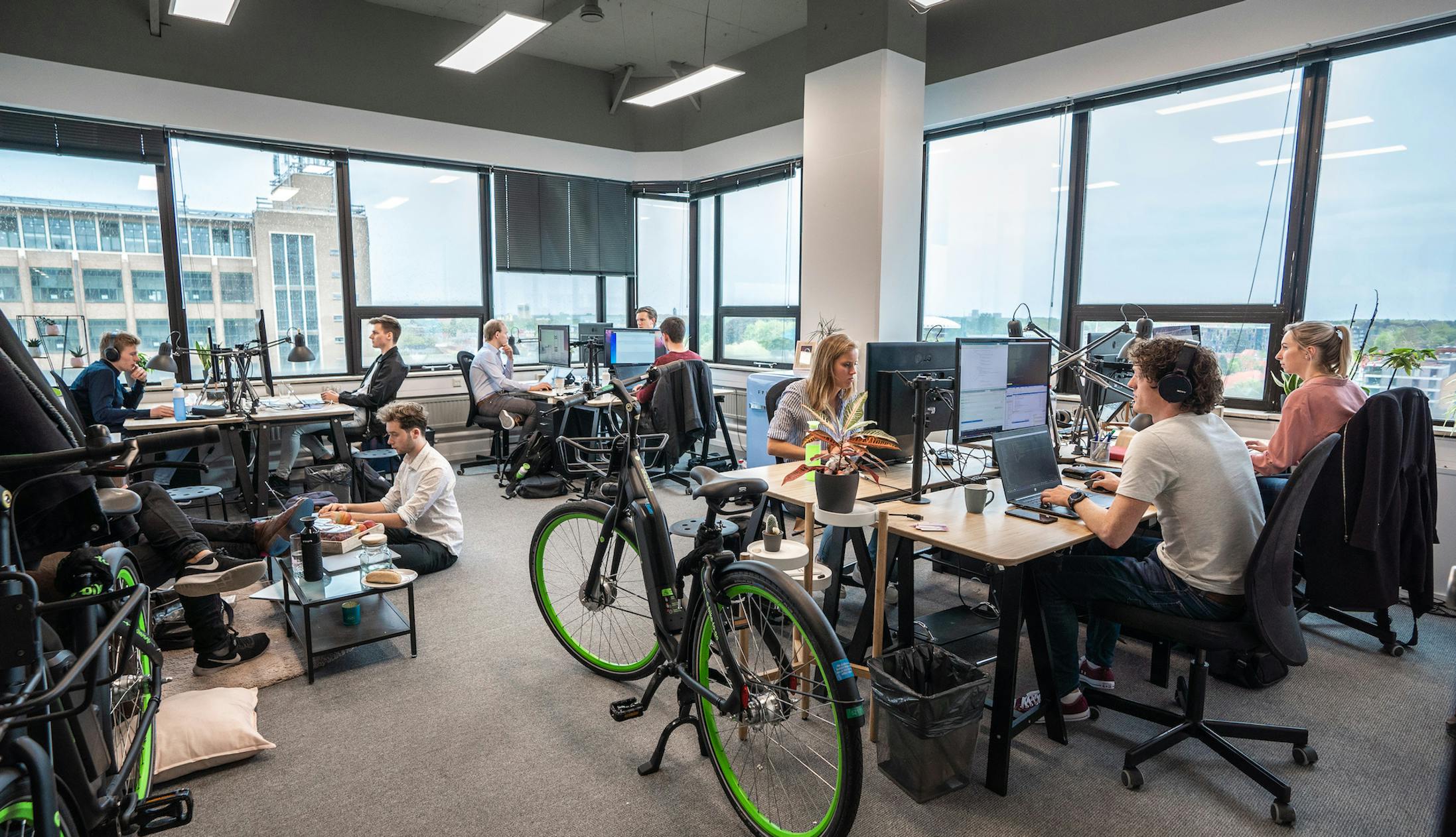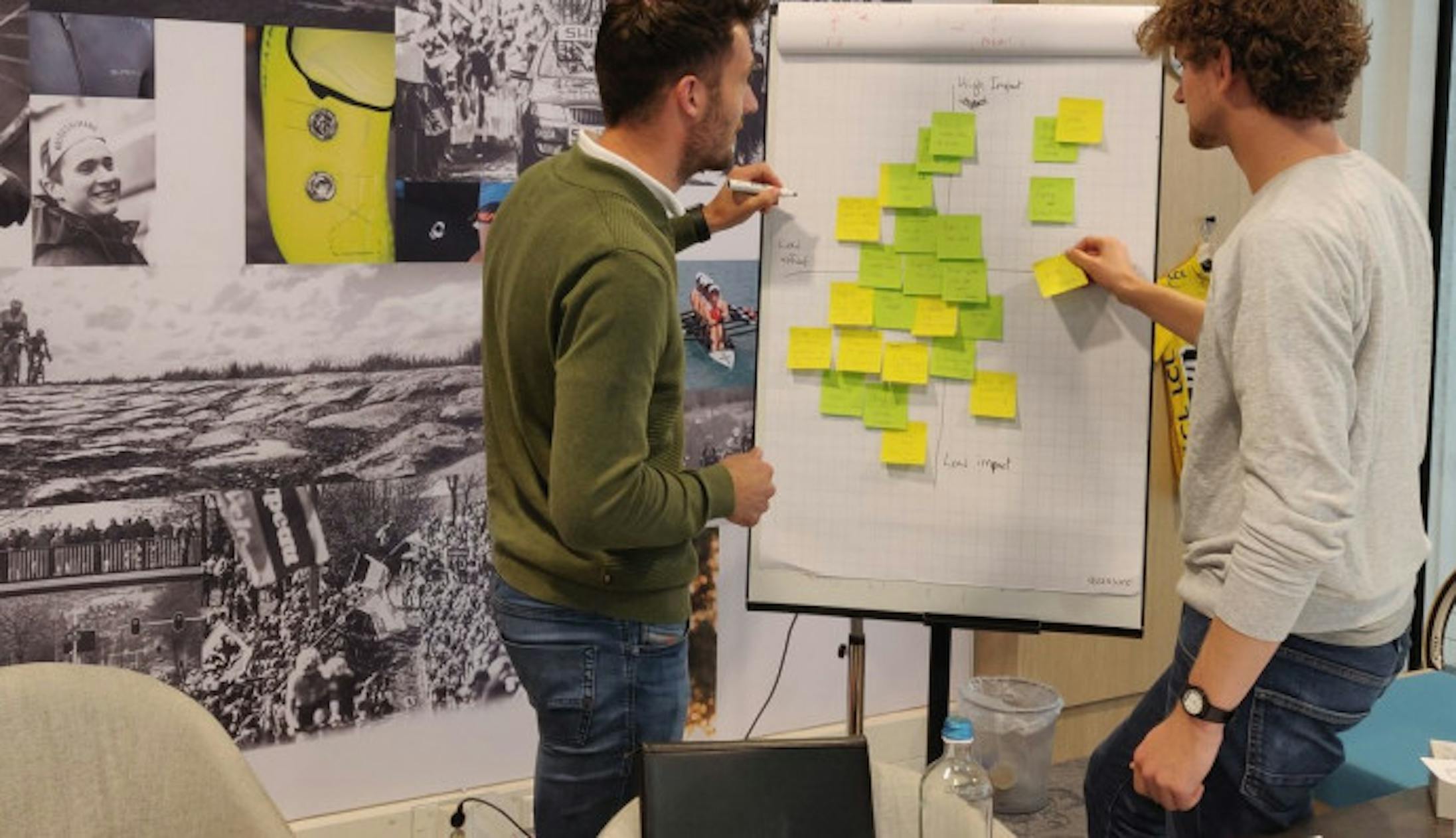What is a Design Sprint?
The main advantage of a Design Sprint is the speed: devise and develop a prototype in just five days. With a small team of 5 to 7 participants - ideally with a clear schedule for the week - you can fast-forward from problem to tested solution.
A Design Sprint is not only efficient, it is a powerful method that allows you to break through the barriers of a fixed mindset and solve problems in a smart and effective way. A Design Sprint brings out the best in each other and helps you focus on what is most important.
Watch an explanation of the Design Sprint in this 90-second video of Jake Knapp, the creator of the Design Sprint.
How does a Design Sprint work?
Each of the five days of the Design Sprint has its own topic and associated checklist. Within the team there is a Sprint Facilitator who directs and guides the process and a Decision Maker who makes the decisive decisions. This Decision Maker does not have to be present throughout the whole Design Sprint, but can take part in only the important decision moments. For the other moments, the Decision Maker appoints a person responsible to take decisions in his or her place.
Day 1: Understand the problem
On the first day, we establish the foundation for the Design Sprint. We involve the entire team in the Design Sprint process and together we define the most important questions and the desired outcomes. Clarifying the problem is what we want to achieve on day one of the Design Sprint. Which problem do you want to solve? And who benefits from the solution? None of us can answer that directly (no one knows everything!), so on this day we are open-minded and focus on knowledge sharing.
Day 2: Exploring solutions
Now that we have clarified the ‘who’ (target group) and the ‘what’ (problem), we start our search for possible solutions by analyzing existing solutions in your market field and listing their pains and gains. Then we get to work with our own ideas. Together we will work out various user flows (the path taken by a prototypical user). We generate a variety of options and make them visual with sketches, so that you get a clear picture of possible solutions.
Day 3: Decide which idea to develop
On the third day, we have a stack of possible solutions. Now we have to determine which of the solutions we will develop and test. No endless discussions and all-night sittings, but a 5-step sticky decision method helps us make that decision. We share ideas with each other and select the best ideas by voting and the Decision Maker casts the casting vote. Then we will visualize the chosen idea using Customer Journey mapping. This gives us insight into the customer’s experience when interacting with your digital product, shows which usability issues users encounter and what needs to be improved to create an optimal user experience.
Day 4: Prototype
The chosen idea is developed into a preferably realistic imitation of the actual product, so that you get a good picture of the look and feel. The prototype is simple but beautifully designed and we made it interactive with our prototype tool. This way you can gain actual user experience.
In the meantime, we also start preparing the user tests. We determine who will conduct the interviews and which questions should be asked to make your concept even better.
Day 5: Testing with actual users
Now we can test the prototype with potential customers. This way we can quickly bring to light the primary reaction of actual users who represent your target group. To get a good picture, we conduct interviews with at least five of the test participants. In all interviews, we note our findings and list the strengths and weaknesses.
When is Design Sprint suitable?
When facing a huge challenge, the design sprint is a good method to achieve goals quickly. The five phases are designed to stimulate collaboration between different positions within an organization, to avoid office politics and to focus on solutions. If you want a change of direction in your business, want to improve collaboration within your team or want to respond quickly to the demands of your users, doing a Design Sprint is the right step to take. This way you avoid spending a lot of time and energy into an application with little chance of success. A Design Sprint therefore is not only useful for start-ups, but also cut out for scale-ups and big corporates.


 Glenn Bergmans
Glenn Bergmans
 Martijn Imhoff
Martijn Imhoff
 Bas de Vaan
Bas de Vaan
 Katja van Weert
Katja van Weert


